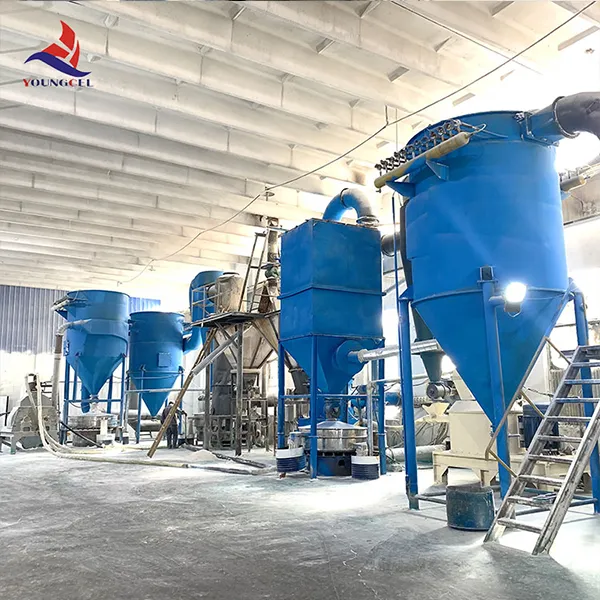Understanding Hydroxypropyl Methyl Cellulose (HPMC) and Its Chemical Composition
Hydroxypropyl Methyl Cellulose (HPMC) is a versatile cellulose ether that is widely used in various industries, including pharmaceuticals, food, cosmetics, and construction. Its unique properties, such as film-forming ability, water retention, and thickening, make it an essential ingredient in many formulations. This article delves into the chemical composition of HPMC, its properties, applications, and its significance in various sectors.
Chemical Composition of HPMC
HPMC is a cellulose derivative that is obtained by modifying natural cellulose through a series of chemical processes. The base structure of HPMC comes from cellulose, a natural polymer found in the plant cell walls. Cellulose is composed of β-D-glucose units linked by 1,4-glycosidic bonds, which form long chains.
The modification of cellulose to create HPMC involves two main chemical reactions hydroxypropylation and methylation.
1. Methylation This process introduces methyl groups (–OCH3) into the cellulose structure. The degree of substitution is critical, as it determines the solubility and viscosity of the resulting HPMC. The methyl groups increase hydrophobicity, which affects the polymer’s interaction with water and other solvents.
2. Hydroxypropylation In this reaction, hydroxypropyl groups (–OCH2CHOH) are introduced to the cellulose backbone. This modification enhances the solubility of HPMC in water, allowing it to form clear solutions at certain concentrations. The balance between methyl and hydroxypropyl substitution determines the properties of HPMC, such as its viscosity, gel-forming ability, and thermal stability.
Properties of HPMC
The properties of Hydroxypropyl Methyl Cellulose are influenced by its chemical composition. Some of the key characteristics include
- Water Solubility HPMC is soluble in cold water, forming a viscous solution. Its solubility is affected by the degree of substitution; higher degrees generally improve solubility.
- Viscosity HPMC solutions exhibit pseudoplastic behavior, meaning their viscosity decreases under shear stress. This property is particularly beneficial for applications requiring ease of application or mixing.
chemical hpmc hydroxypropyl methyl cellulose

- Film Formation HPMC can form flexible films upon drying, making it suitable for coatings and encapsulation processes in pharmaceuticals and food products.
- Thermal Stability Unlike some other cellulose derivatives, HPMC maintains stability under varying temperature conditions, making it a reliable component in diverse formulations.
Applications of HPMC
Due to its unique properties, HPMC finds widespread use across multiple industries
- Pharmaceuticals In the pharmaceutical industry, HPMC is used as a binder, thickener, and film-forming agent in tablet formulations. It also acts as a stabilizer in suspensions and emulsions, ensuring the uniform distribution of active ingredients.
- Food Industry HPMC serves as a thickening agent and emulsifier in food products, enhancing texture and stability. It is also used in gluten-free formulations, providing structure to baked goods.
- Cosmetics In cosmetics, HPMC is valued for its ability to retain moisture and improve the texture of creams and lotions. It acts as a gelling agent and stabilizer in various personal care products.
- Construction HPMC is involved in the production of construction materials, such as mortars and adhesives, where it improves workability, water retention, and adhesion properties.
Conclusion
In summary, Hydroxypropyl Methyl Cellulose (HPMC) is a chemical compound with significant applications across various industries due to its unique properties derived from its chemical composition. The balance between methyl and hydroxypropyl substitution plays a crucial role in determining its functionality. As industries continue to explore innovative applications for HPMC, its importance as a multifunctional ingredient remains ever-growing, proving essential in enhancing product performance and efficacy. Understanding HPMC’s chemical makeup allows researchers and manufacturers to tailor its properties for specific applications, ensuring high-quality formulations in pharmaceuticals, food, cosmetics, and construction.
-
A Comprehensive Guide to Methyl Ethyl Hydroxyethyl Cellulose: Applications and Industry InsightsNewsNov.24,2025
-
Understanding Methyl 2 Hydroxyethyl Cellulose: Uses, Benefits & Industry InsightsNewsNov.24,2025
-
Hydroxyethyl Methyl Cellulose HEMC: Industrial Uses, Benefits & Future TrendsNewsNov.23,2025
-
HEMC Cellulose: Versatile & Sustainable Industrial Polymer | YoungcelNewsNov.23,2025
-
Methyl Hydroxyethyl Cellulose: Versatile Building Block for Industry & SustainabilityNewsNov.23,2025
-
CAS 9032 42 2: Understanding Polyvinyl Alcohol's Impact on Industry & SustainabilityNewsNov.22,2025




